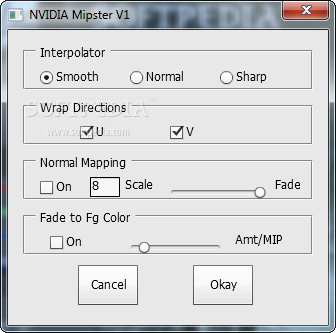

Be sure to use a program that can apply an alpha channel without destroying the RGB colors, like Graphics Converter. From the above comment, the normal vector must be normalized - since white is not a legal normal map value, these white areas will have strange lighting errors. Therefore it is important that you not modify the RGB channel with a paint program instead use a program designed to create normal maps. In practical terms, this means that the colors must balance in a certain ratio. The intent of this is to allow for high frequency repeating normal maps that add texture at a rate different from a low frequency albedo. Where ratio scales the normal map relative to the UV map of the parent art asset. The normal map does not have to be the same size as the day or lit textures, but it does have to be a power of 2. Generally since X-Plane normal maps are uncompressed, you will get higher image quality by going back to the original materials, rather than trying to re-convert the DXT-compressed normal map. This tutorial explains how FSX normal maps are created. You can apply it to a custom-drawn bump map drawn in gray-scale using PhotoShop or simply apply it to your RGB textures. You open a PNG file, adjust a few parameters, and then save the results. NormalMappr is a free program for OS X that converts bump-maps to tangent-space normal maps. The RGB of the texture are used for the normal map, and the alpha channel is used for the specular level. X-Plane 10 uses combined normal and specular level maps in a single texture.

A Specular Level Map or shininess map is a texture that defines which parts of a surface are shiny, on a per-pixel basis.

See the Creating Normal Maps section below for information on creating normal maps from bump maps. X-Plane does not use bump maps it only uses normal maps. A bump map is a texture that defines the height of bumps on a surface, on a per-pixel basis.īump maps encode the height as a gray-scale image. Normal maps encode the direction of light reflections using RGB colors. A normal map is a texture that defines which way light bounces off a surface, on a per-pixel basis.


 0 kommentar(er)
0 kommentar(er)
